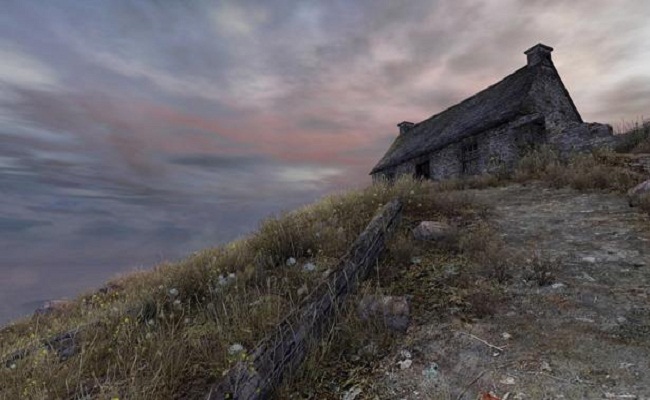Dear Esther is hardly a conventional game, and it strips away all of the classic mechanics to leave only walking controls intact. The game focuses on narrative rather than puzzles, battles, or exploration—and even then, the narrative is vague and randomized. Its soundtrack is quite good compared to the rest of the game, and the sound effects as you travel through the game are absolutely perfect. However, its short length is very disappointing, even considering its strange approach to gaming.
The gameplay is very easy and only consists of pressing four buttons to move. The lack of swimming or jumping commands was aggravating throughout the game, even if it was trying to have a minimal approach to controls. There were many areas where that slightly different view could have changed things—though that might be a testament to how interesting the graphics were to look at. The swimming controls would have been nice simply because walking through the water at the start of the game can get you very lost, and the opaque water won’t help you find your way to land.
The graphics were beautiful, and I liked running off the path and into the bushes just to see how they would interact with the player. Unfortunately, most of the plant life is two-dimensional, and simply turns towards you as you move to give the impression that they are three-dimensional. Aside from that, the textures of the water and cave systems were beautiful and made me think of Skyrim. The lighting from the moon, sunset, or glowing fungi of the caverns was beautiful, especially when you get deep into the caves and start seeing candles casting shadows against the walls. The graphics aren’t perfect, but they are amazing. Combined with perfect sound effects, the environment was very immersive.
Walking through the different settings, the plot is delivered as random snippets. Playing through the game twice will give you different snippets, and therefore a different story. For a game that focuses on the narrative more than anything else, it certainly lives up to the task—but I feel that they could have added more snippets to the game. There were many places that seem like they could have had events or a backstory, but the narrator remained silent when I inspected them. Adding these little tidbits could have expanded the narrative and allowed for a more clear plot—or at least a better-founded one. While I might complain, the plot is still very good and draws the player forward through the game—and as it ends and spirals out of control, it’s very fun trying to piece the narrative together to form a cohesive story.
There are many games whose ease make them feel more like visual novels than games—but this is a game that puts those games to shame, albeit intentionally. It explores new territory somewhere between movies, games, and novels—and finds a nice niche to sit in. However, fans of any of these three might find their favorite aspects missing, and the game possibly went unsung for this reason. If you can look past its short length, low amount of interactivity, and are a general fan of literature, you will enjoy this game.


0 Comments